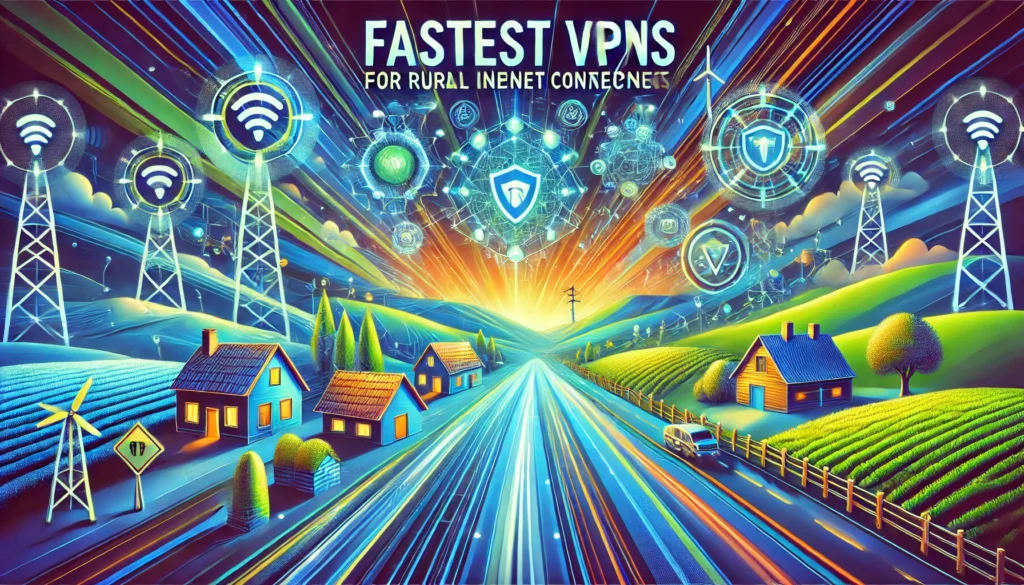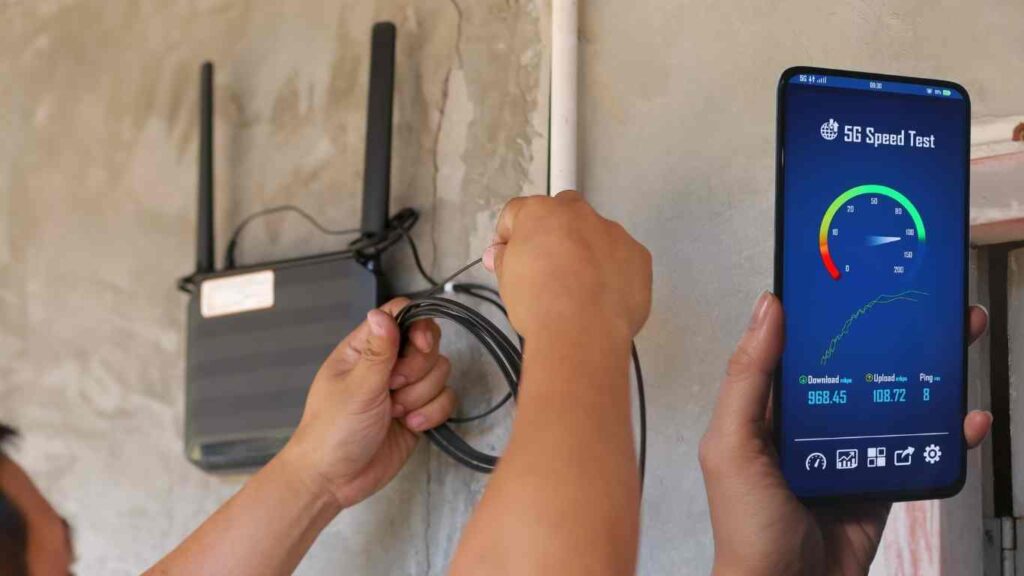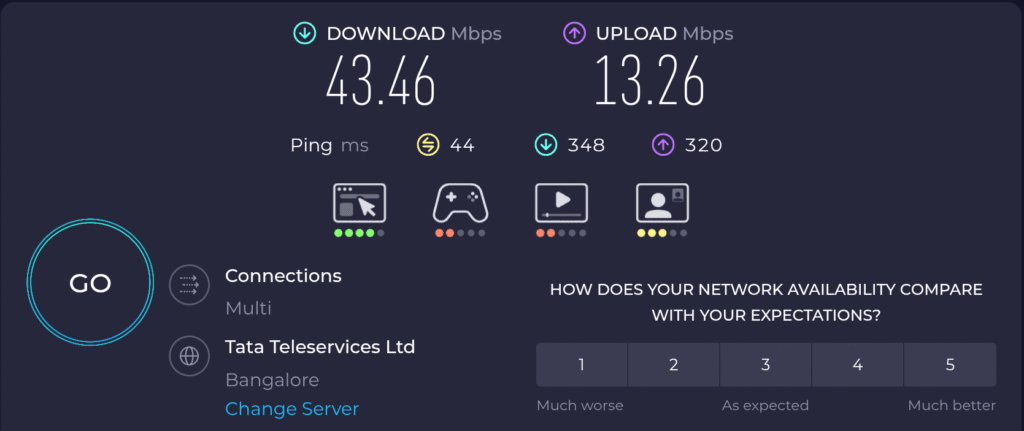Rural internet users often face a unique set of challenges: limited broadband options, higher latency, and slower overall speeds. In many remote areas, internet connectivity is managed through DSL, satellite, or even mobile hotspots—each of which can be prone to interruptions and sluggish performance. That’s where choosing the fastest VPNs for rural internet connections can make a world of difference. By picking the right solution—one that prioritizes speed, security, and low-latency communication—you can experience faster browsing, smoother streaming, and safer online experiences, even if you live miles away from the nearest city center.
In this article, I will walk you through everything you need to know about finding and using a high-speed VPN for rural areas, from must-have features to the best providers on the market. I will also share practical tips and latency-reduction strategies to help you optimize your rural broadband connection for streaming, gaming, or remote work. Let’s dive in now!
Table of Contents
Why Use a VPN for Rural Internet?

If you live in a rural area, you’re probably used to dealing with slow or inconsistent Internet speeds. Here’s how a fast VPN can help you in that case:
- Secure Access to Remote Servers: Whether you need to connect to a workplace server or stream region-locked content, a secure VPN for rural broadband keeps your personal data encrypted and protected from potential threats.
- Bypass Throttling: Some internet service providers (ISPs) throttle speeds based on user activity. A VPN masks your data traffic, making it more difficult for ISPs to selectively slow down certain types of traffic, like streaming or torrenting.
- Improve Connection Stability: VPNs with low-latency VPN technology can help stabilize connections that frequently drop or experience high ping times—common issues in rural setups.
- Privacy in Remote Areas: Even in a small-town environment, online privacy is important. A VPN stops snoopers, data collectors, and other prying eyes from tracking your browsing habits and location.
While using a VPN can sometimes decrease internet speeds due to encryption overhead, carefully choosing one of the fast VPN providers that specialize in rural internet optimization can potentially offset or even improve your overall performance.
Key Features to Look For in a Fast VPN
Selecting the best VPN for slow connections depends on more than just raw speed. Here are some top features to look for:
- Lightweight VPN Protocol
- Opt for providers that use next-generation protocols like WireGuard or IKEv2, which typically offer quicker connections and less overhead.
- Server Locations
- A provider with a large global server network allows you to choose servers close to your actual location, reducing latency and maintaining speed.
- Data Compression
- Some VPNs offer VPN data compression features that can help optimize bandwidth consumption, particularly helpful when you have a metered or limited data plan.
- Bandwidth Optimization Tool
- Look for providers that specifically mention bandwidth-saving or data optimization. This is especially crucial for satellite or DSL-based connections commonly found in rural settings.
- Reliable VPN Service
- Reliability is critical in rural areas where connection drops happen more frequently. The VPN should handle quick reconnections automatically.
- Cross-Platform Compatibility
- Make sure the VPN supports your primary devices—whether it’s Windows, macOS, iOS, Android, or even routers—so you can securely use it across your entire home network.
- Low-Latency Features
- Some VPNs are specifically marketed as low-latency VPN services. This is essential if you plan to game or video conference and need minimal lag.
How VPN Protocols Affect Speed?
Choosing a lightweight VPN protocol is often the key to unlocking fast and stable connections, especially when your local network is slow or unstable. Here’s a quick rundown of popular protocols:
- OpenVPN
- Known for robust security but can be slightly slower due to heavier encryption.
- IKEv2/IPSec
- Great speed and stability for mobile devices, with fast reconnections if your network fluctuates.
- WireGuard
- A newer protocol designed for high efficiency and minimal overhead, making it a top choice for high-speed VPN for rural areas.
- L2TP/IPSec
- Easier to set up on some devices but not as fast as WireGuard or IKEv2.
- SSTP
- A Microsoft-developed protocol that can bypass firewalls effectively, though not always the fastest option.
For most rural internet users, WireGuard or IKEv2 are generally considered top-notch choices because they typically yield lower latency and better speeds across varying bandwidth conditions.
Top 6 Fast VPN Providers for Rural Areas
If you’re looking to upgrade to the fastest VPN that works well with mobile hotspot VPN, DSL, broadband, or satellite connections, consider these seven providers. Each offers features tailored to rural internet optimization.
Here are some popular VPN services you might consider as alternatives. Each is widely recognized for offering high-speed connections, robust security, and broad server networks—traits that can help rural users maximize their limited bandwidth.
ExpressVPN
- Why It’s Popular: Consistently praised for its ultra-fast servers, user-friendly apps, and strong encryption.
- Speed & Performance: Known to maintain stable speeds even over long distances, which is especially beneficial for rural setups.
- Key Features:
- Large global server network.
- Lightway protocol for improved speed.
- 24/7 live customer support.
NordVPN
- Why It’s Popular: It offers a blend of top-tier security (including Double VPN) and competitive speeds.
- Speed & Performance: Its NordLynx protocol (based on WireGuard) helps reduce latency and deliver faster connections.
- Key Features:
- Extensive server network, including specialized P2P and Double VPN servers.
- Strong no-logs policy, independently audited.
- Easy-to-use interface across platforms.
Surfshark
- Why It’s Popular: A budget-friendly option that doesn’t skimp on speed or security, making it particularly appealing for families and multi-device households.
- Speed & Performance: WireGuard protocol ensures quick connections, while server load balancing helps avoid congestion.
- Key Features:
- Unlimited simultaneous device connections.
- “CleanWeb” feature to block ads, trackers, and malware.
- Camouflage Mode to hide VPN use from ISPs.
CyberGhost
- Why It’s Popular: User-friendly design, specialized streaming servers, and a large number of global servers.
- Speed & Performance: Good speeds for streaming and gaming, though performance can vary by server.
- Key Features:
- Dedicated modes for streaming, torrenting, and gaming.
- Clear server load indicators help you pick the least congested connection.
- Strong encryption and no-logs policy.
ProtonVPN
- Why It’s Popular: Created by the team behind ProtonMail, it emphasizes privacy and security.
- Speed & Performance: Offers a free plan (with limited speeds/servers) and a paid plan that unlocks high-speed servers.
- Key Features:
- Secure Core servers route traffic through privacy-friendly countries.
- Strong focus on open-source apps and transparency.
- Built-in NetShield feature blocks ads and trackers.
IPVanish
- Why It’s Popular: Provides solid speed and good device compatibility, including routers and set-top boxes.
- Speed & Performance: Generally performs well for streaming and file transfers.
- Key Features:
- Offers unlimited simultaneous device connections.
- Built-in SOCKS5 proxy for certain use cases.
- User-friendly apps with comprehensive VPN settings.
Tips For Rural Internet Optimization
Even the fastest VPNs for rural internet connections will struggle if your overall setup is not optimized. Combine your VPN usage with these bandwidth optimization tools and tips:

- Regularly Update Your Hardware
- Older routers or modems can decrease your internet speed. Check for firmware updates or invest in a modern router optimized for better range and throughput.
- Use Ethernet Over Wi-Fi When Possible
- If you can directly connect your device to the router via Ethernet, you’ll often see less latency and higher speeds, particularly important in rural setups.
- Choose Optimal Router Placement
- Place your router in a central, elevated location with minimal obstructions. Walls, metal objects, and electronic interference can significantly degrade performance.
- Limit Background Applications
- Streaming or cloud backup services running in the background can hog bandwidth. Schedule large downloads or uploads during off-peak times like late night.
- Enable QoS (Quality of Service)
- Many routers have QoS settings that let you prioritize certain types of traffic (like gaming or streaming) to ensure consistent performance.
- Consider Data Compression Options
- Pair your VPN’s compression features with compression settings on devices or browsers to conserve bandwidth.
- Perform Regular Speed Tests
- Use speed tests to track your performance, not just from your ISP but also while the VPN is active. This helps identify if specific times or servers slow down your connection.
- Monitor Data Usage
- If you have a data cap, use your VPN’s or router’s analytics to keep track. Unexpected spikes could mean you need more effective compression or to curb data-hungry apps.
Performing a VPN Speed Test in Rural Areas
A VPN speed test is important for understanding the impact your VPN has on your connection. Here’s how to do it effectively:

- Benchmark Without a VPN
- First, run a speed test on a reliable website (like speedtest.net) with the VPN turned off. Record your ping, download speed, and upload speed.
- Connect to a Nearby VPN Server
- Choose the VPN server geographically closest to you for the best baseline results. Run another speed test and record the changes.
- Experiment With Different Servers
- Try servers in various locations, especially if you need to connect to a specific region. Pay attention to how distance affects latency.
- Toggle Protocols
- Switch between different protocols (WireGuard, IKEv2, OpenVPN) to see which yields the best speeds for your rural setup.
- Compare and Adjust
- Once you identify the optimal server and protocol, you can set it as your default in the VPN app.
Performing these tests at different times of the day—peak hours vs. off-peak hours—will give you a comprehensive view of how your fast VPN will perform.
Common Challenges of Using a VPN in Rural Settings
While a VPN can mitigate many issues, some hurdles remain:
| Higher Latency for Satellite | Satellite inherently has higher latency due to the distance signals must travel. Even the best VPN for slow connections won’t eliminate this completely, but it can help stabilize fluctuations. |
| Data Caps | Many rural ISPs enforce monthly data caps. VPN encryption overhead can slightly increase data usage, although compression features may help offset this. |
| Limited Infrastructure | In some remote regions, the local infrastructure might be outdated. Even the fastest VPNs won’t solve physical wiring or tower limitations. |
| Potential VPN Blocks | Some ISPs or local networks might block or throttle VPN traffic. Opt for providers with obfuscation or stealth protocols if you suspect your ISP is restricting VPN use. |
FAQs About Fast VPNs and Rural Internet
Will a VPN slow down my already slow rural internet?
It can, in some cases, add a small overhead due to encryption. However, a well-optimized VPN or one of the fast VPN providers might even improve speeds if your ISP is throttling specific types of traffic.
How do I know if my VPN is optimized for rural broadband?
Look for mentions of rural internet optimization, low-latency VPN features, or “rural-optimized” servers. You can also use a VPN speed test to see how the VPN performs in your specific location.
Which VPN protocol is best for rural connections?
WireGuard is widely praised for its speed and efficiency. IKEv2 is also a good option, especially for mobile devices or mobile hotspot VPN setups.
Are free VPNs suitable for rural internet users?
Free VPNs often have server congestion, data limits, and slower speeds. In rural settings—where speed is already at a premium—a paid, reliable VPN service is usually the better choice.
Can a VPN help with satellite internet latency?
A satellite internet VPN optimized for high latency can help stabilize the connection, but it won’t make satellite latency disappear entirely. Still, it can reduce some of the jitter and packet loss.
Is data compression important for rural VPN use?
Yes. If you’re on a metered connection or have lower bandwidth, VPN data compression can save you valuable data and improve loading speeds for certain websites.
How often should I switch VPN servers?
If you notice your speeds dropping, try switching to another server. Most VPNs allow server switches with minimal downtime, so you can experiment freely.
Conclusion
Living in a rural area doesn’t mean you have to adjust for slow, unstable internet. By choosing one of the fastest VPNs for rural internet connections—especially a service that offers low-latency VPN capabilities, lightweight VPN protocols, and features like data compression—you can significantly enhance your everyday browsing, streaming, and remote work experience. Combined with good hardware, proper router settings, and bandwidth optimization tools, a top-tier VPN can be an indispensable ally in overcoming many of the speed-related challenges that come with remote living.
So, whether you’re tackling satellite internet, DSL, mobile hotspots, or a limited broadband plan, the right VPN solution can give you the security, privacy, and yes—speed—you deserve. Don’t be afraid to run regular VPN speed tests, explore different server locations, and tweak your setup until you find the perfect balance. With the right approach, you’ll soon enjoy a smoother, more secure online experience, no matter how far from the city you reside.
Thank you for reading! If you found this guide helpful, feel free to share it with friends and neighbors looking to speed up their rural internet connections. Happy browsing! ✨ Do comment your thoughts below 👇




